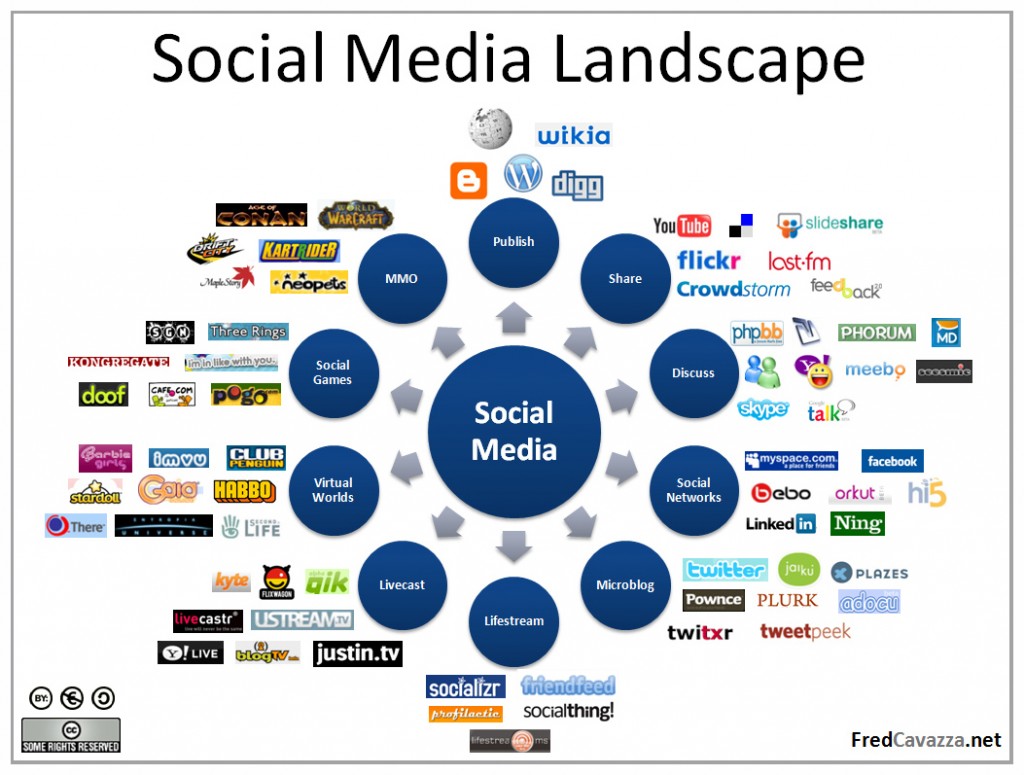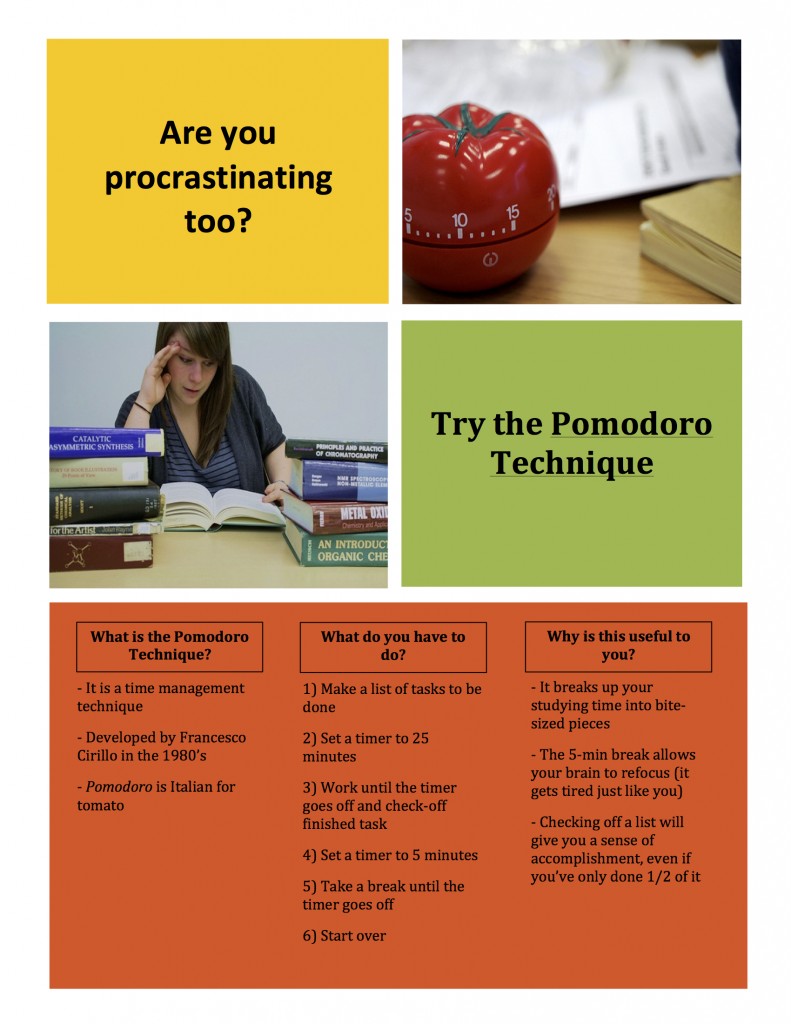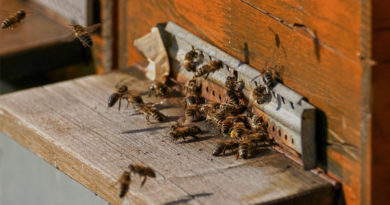Conquering Procrastination Like a Boss
By Chelsea Hinshaw, former student and academic peer coach at The Ohio State University in Newark
After an hour of studying, the idea of continuing to study is dreadful, UNBEARABLE! Your brain stops retaining new information. Your mind can’t stop wondering to other topics. You’re almost willing to actually go do your laundry then sit there and studying any longer. Why is that, you ask?
In a study by Alejandro Lleras, a professor at the University of Illinois, it was discovered that your brain really isn’t built for a constant stimulation. Studying for an hour or more is considered a constant stimulation, which gradually causes your brain to stop registering your sight, sound, and even feelings. Eventually your brain will just categorize everything as unimportant since the stimulus is unchanging. In Lleras’ experiment, students who were able to be productive distracted for a short period of time during their task managed to perform their tasks better than those who just powered through. His experiment proved that your brain is built to detect changes and respond to those changes rather than focusing on a topic for a stretched out period of time.

Francesco Cirillo’s Pomodoro Technique from the late 1980’s puts Lleras’ theory into action, because what good is that knowledge if there isn’t a way to use it? The Pomodoro technique consists of 5 steps to manage your time.
Step 1: Identity the task/s you want completed. Once you have a realistic list of tasks to accomplish for the day, break the tasks up into 25 minute long tasks, or a pomodoros. Say your tasks are to write a 4-page paper for English class, and read a chapter for Biology. You know that it’ll take you about an hour to actively read your chapter, so break that task into 2-3 pomodoros (25 minute sessions). Break your paper in to bite-sized pieces like an outline, and writing just a couple paragraphs per pomodoro. Just remember to keep your list of pomodoros realistic and write them down. Physically seeing what it is that you need to do will help your state of mind.
Step 2: Set a timer for 25 minutes, or 1 Pomodoro. These 25 minutes are meant for you to buckle down and work, work, work. Why only 25 minutes? It’s because 25 minutes is a non-threating time frame, unlike the time frame of an hour or more to just do homework. Use an egg timer or even a phone app, anything to keep track of the time so that you don’t have to. If you are starring at a clock to keep track of time, you’ll be too distracted to really get anything done.
Step 3: Put a checkmark next to your accomplished task when the timer goes off. Once the timer goes off, you have finished a task so check it off your list with pride! Checking off the task on a list is important because it will give you a sense of accomplishment, which will boost your self-esteem whether you know it or not.
Step 4: Set a timer for 5 minutes. These 5 minutes are meant for you to take a break. Facebook and playing a game on your phone does NOT count as a break activity. During break time, you want to get up and move. Moving will circulate your blood and rejuvenate your body so that you are mentally and physically ready to return to your pomodoros.
Step 5: Repeat. Repeat these steps until you have accomplished all of your tasks for the day. If you exceed 4 pomodoros, give yourself a longer break, 15-20 minutes.
NOTE: You can exchange the 25 minutes of studying for 30 minutes if you are up for it. When studying for 30 minutes, give yourself 10 minutes breaks after each pomodoro =)
Here’s a graphic you could keep at hand as a reference:
References:
Bohon, Cory. “The Pomodoro Technique: An Overview.” 11 Mar 2011: n. page. Web. 7
Nov. 2013. Retrieved from: http://chronicle.com/blogs/profhacker/the-pomodoro-technique-an-
overview/31503.
University of Illinois at Urbana-Champaign. “Brief diversions vastly improve focus,
researchers find.” ScienceDaily, 8 Feb. 2011. Web. 12 Nov. 2013. Retrieved from: http://www.sciencedaily.com/releases/2011/02/110208131529.htm.
DigitalRalph (Photographer). (2011). Social Media Landscape. Retrieved from: https: //www.flickr.com/photos/ralphpaglia/6354852227/
Mascaro, L. (Photographer). (2010). Pomodoro Technique. [Web Photo]. Retrieved from:
http: //www.flickr.com/photos/lucamascaro/4975166968/
UBC Learning Commons. (Photographer). (2013). Student Studying. [Web Photo]. Retrieved from: https: //www.flickr.com/photos/56866338@N06/8726823600/in/photostream




